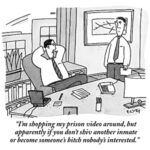NNALS OF CULTURE
LATE BLOOMERS
Why do we equate genius with precocity?
by Malcolm GladwellOCTOBER 20, 2008
The imprecision of their goals means that these artists rarely feel they have succeeded, and their careers are consequently often dominated by the pursuit of a single objective. These artists repeat themselves, painting the same subject many times, and gradually changing its treatment in an experimental process of trial and error. Each work leads to the next, and none is generally privileged over others, so experimental painters rarely make specific preparatory sketches or plans for a painting. They consider the production of a painting as a process of searching, in which they aim to discover the image in the course of making it; they typically believe that learning is a more important goal than making finished paintings. Experimental artists build their skills gradually over the course of their careers, improving their work slowly over long periods. These artists are perfectionists and are typically plagued by frustration at their inability to achieve their goal.
You ask me an odd question. Of course one can work here, as anywhere else, if one has the will. Paris offers, further, an advantage you can’t find elsewhere: the museums in which you can study the old masters from 11 to 4. This is how you must divide your time. From 6 to 11 you go to a studio to paint from a live model; you have lunch, then from 12 to 4 you copy, in the Louvre or the Luxembourg, whatever masterpiece you like. That will make up nine hours of work. I think that ought to be enough.
I’ll reckon out for you what you should spend. A room at 20 francs a month; lunch at 18 sous and dinner at 22, which makes two francs a day, or 60 francs a month. . . . Then you have the studio to pay for: the Atelier Suisse, one of the least expensive, charges, I think, 10 francs. Add 10 francs for canvas, brushes, colors; that makes 100. So you’ll have 25 francs left for laundry, light, the thousand little needs that turn up.
Before long someone appeared at his hotel with an object wrapped in a cloth. He sold the picture for 150 francs, which inspired him to trot back to his house with the dealer to inspect several more magnificent Cézannes. Vollard paid a thousand francs for the job lot, then on the way out was nearly hit on the head by a canvas that had been overlooked, dropped out the window by the man’s wife. All the pictures had been gathering dust, half buried in a pile of junk in the attic.
Read more: http://www.newyorker.com/reporting/2008/10/20/081020fa_fact_gladwell?currentPage=all#ixzz0sRjsEfjV


